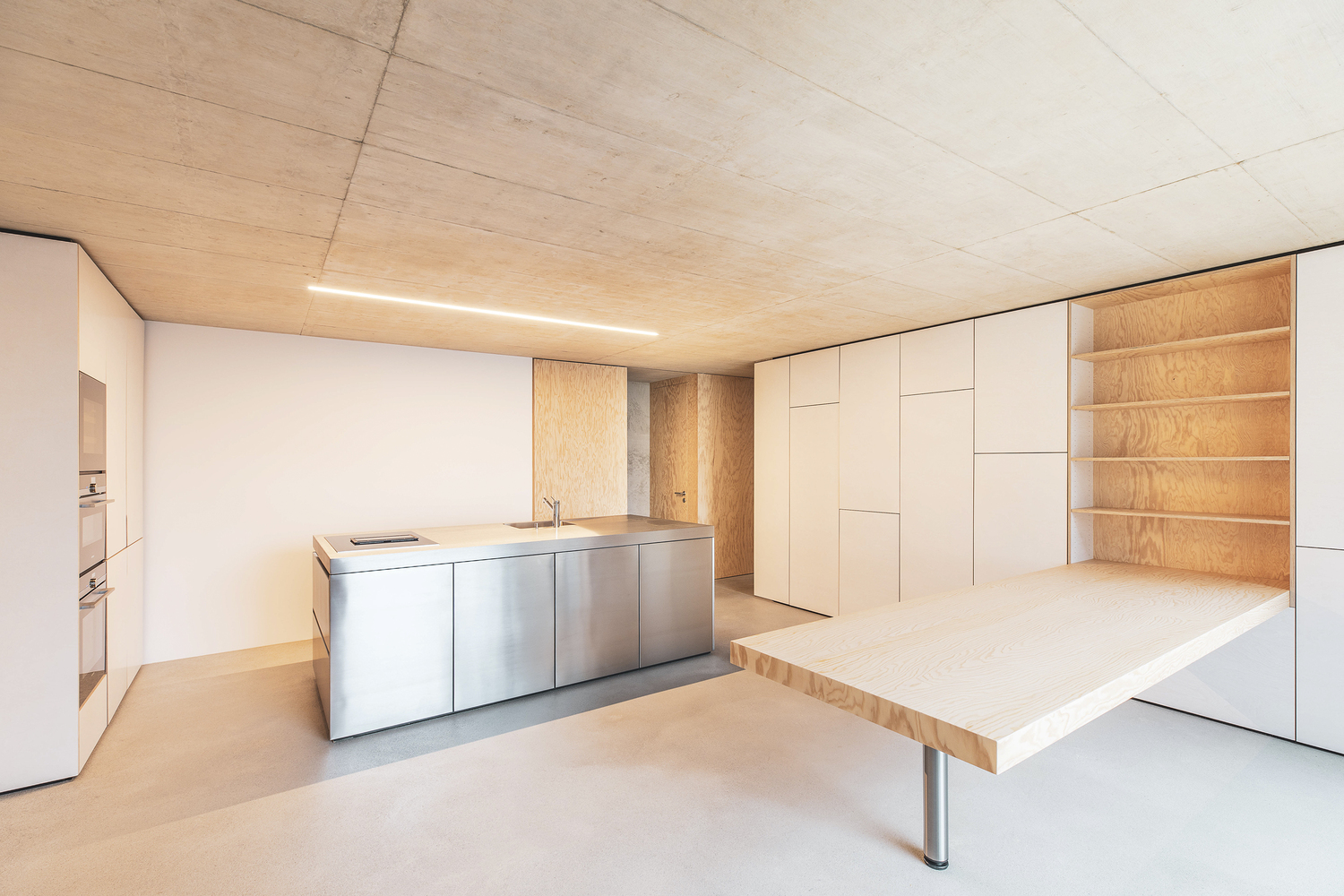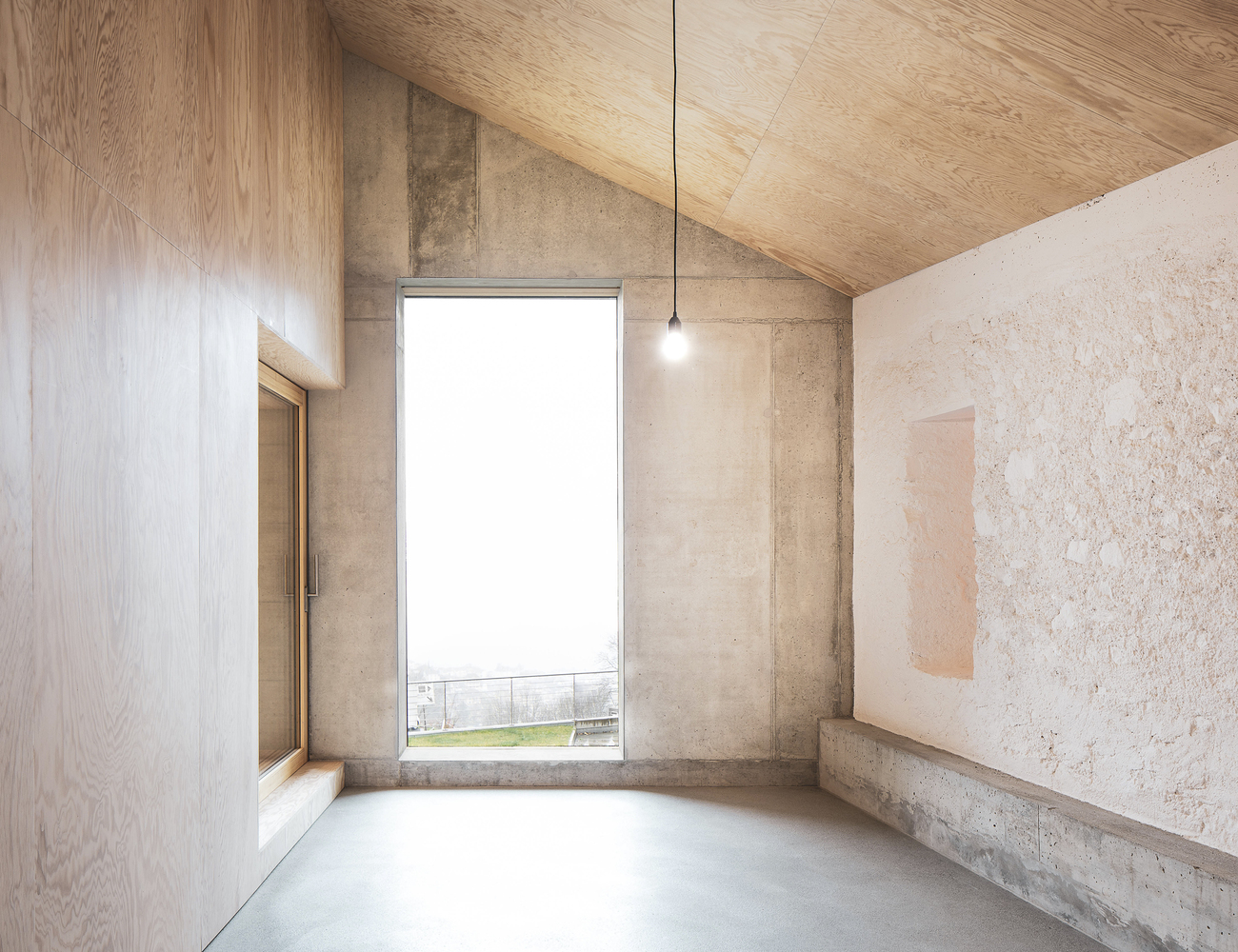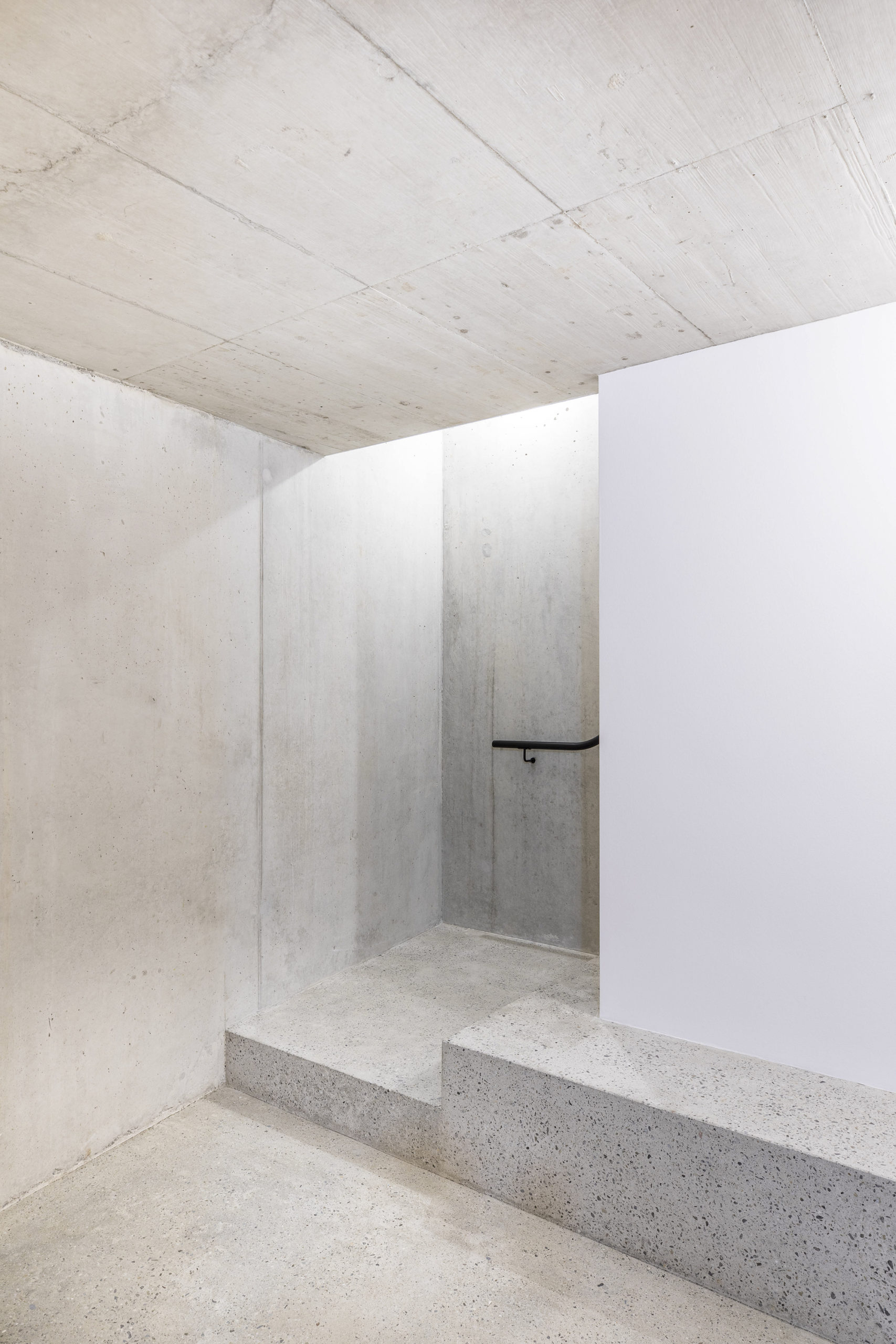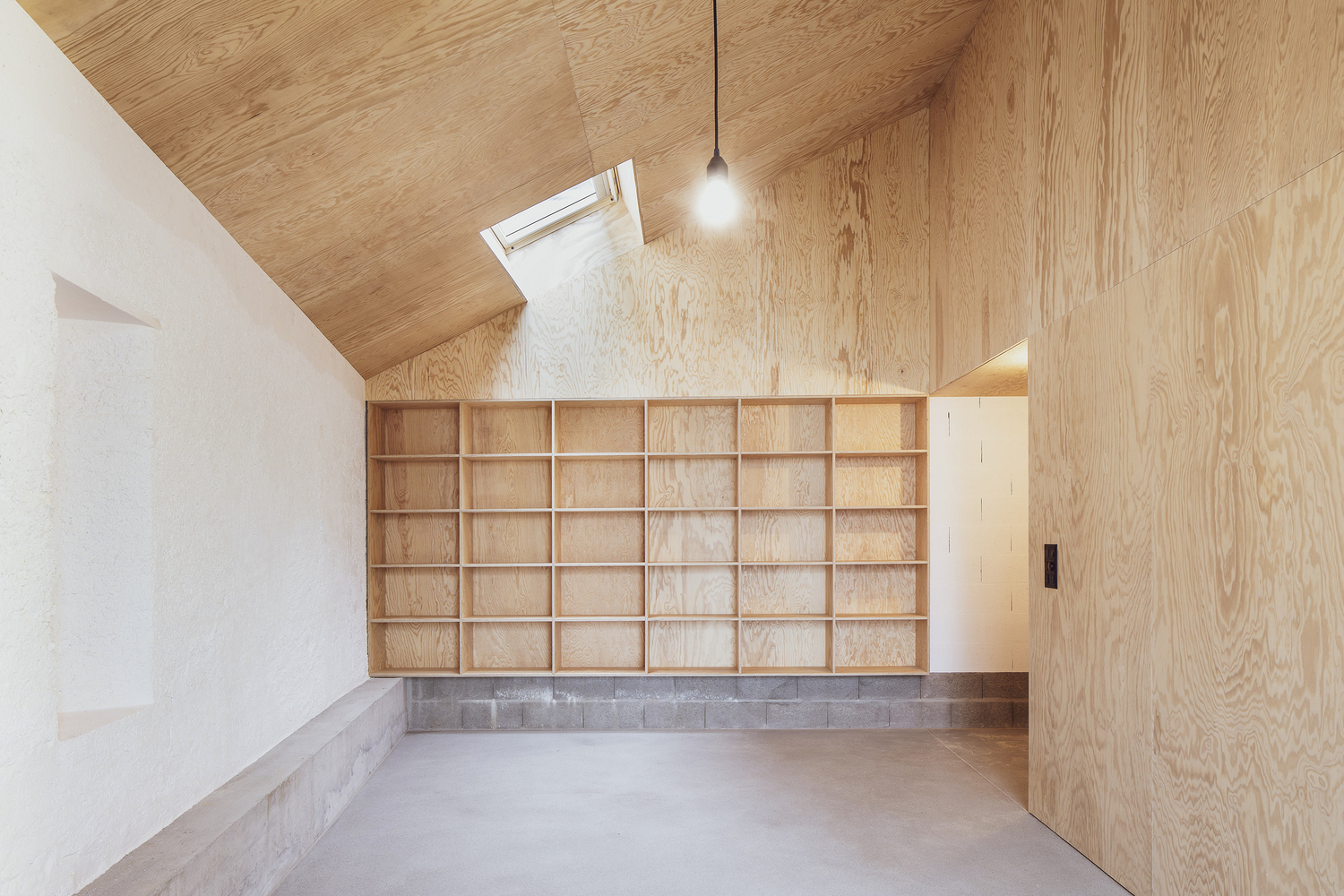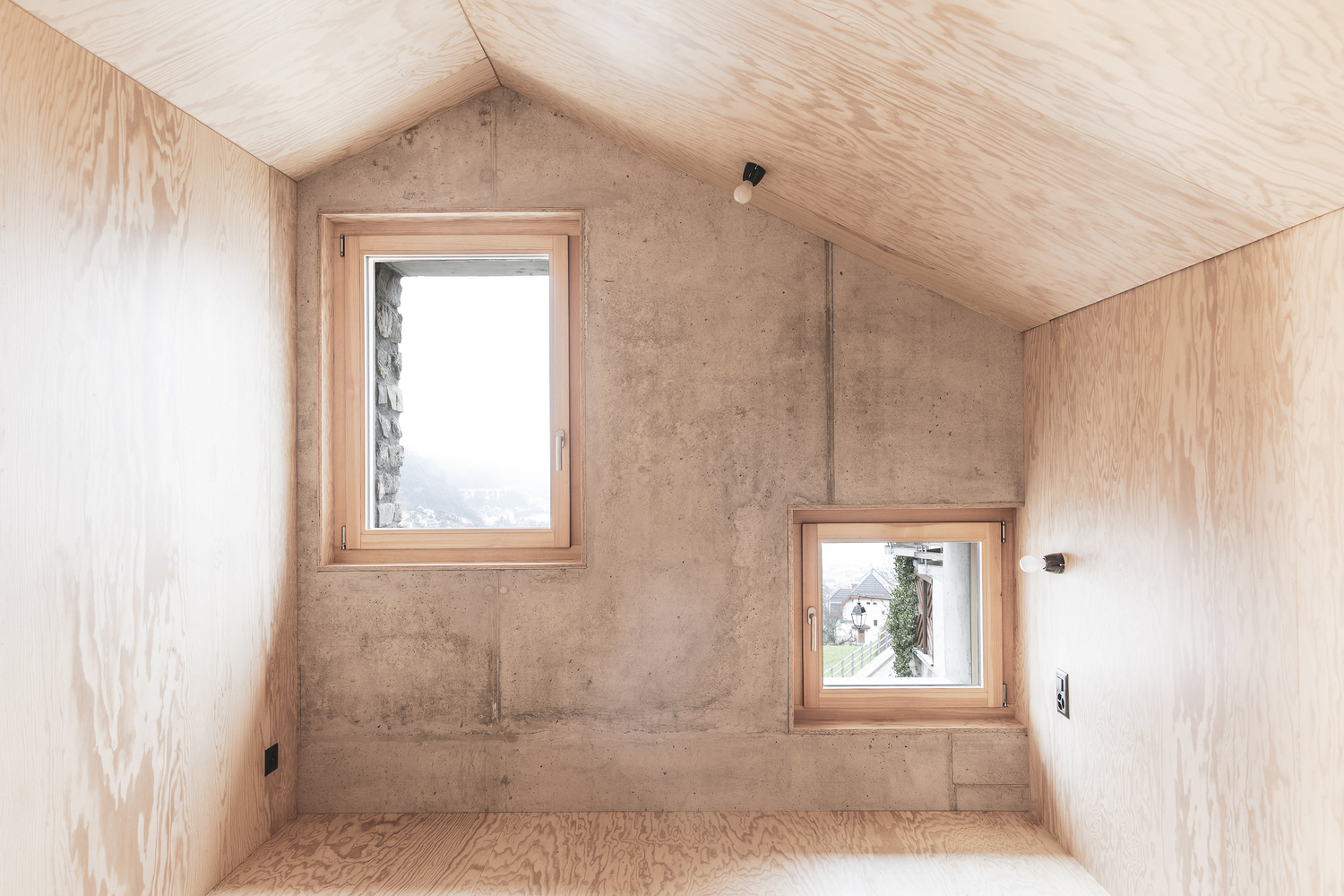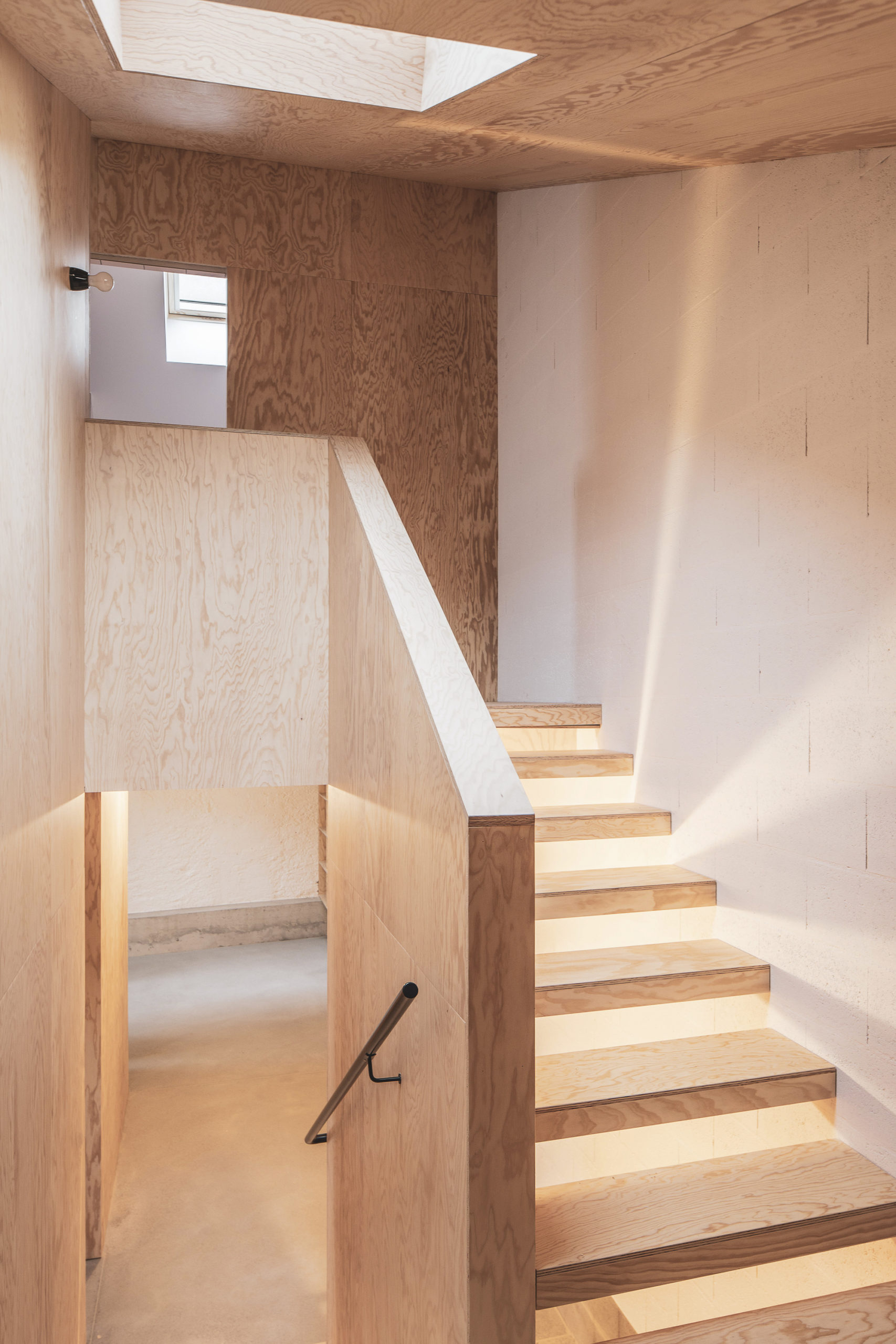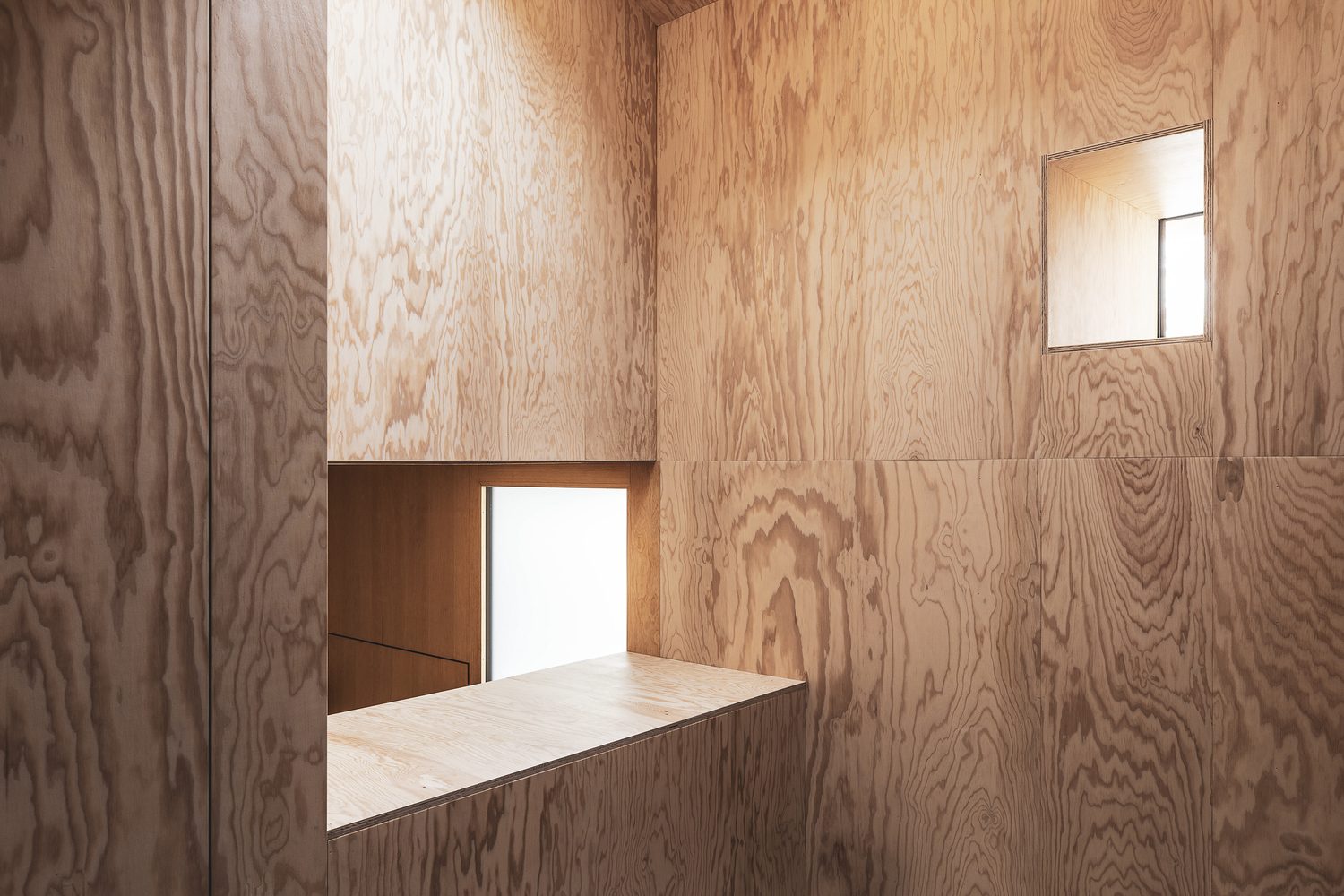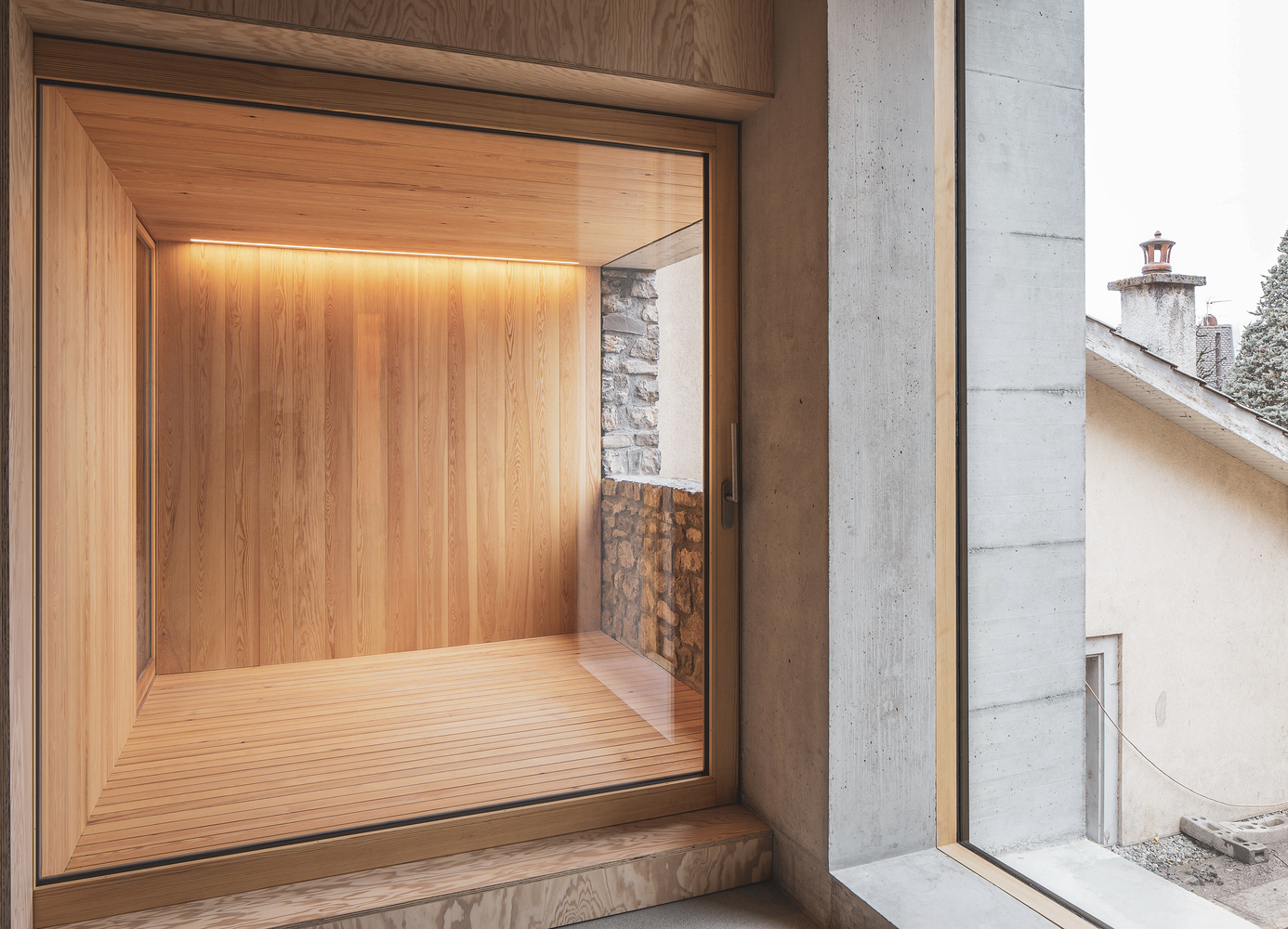Stable Conversion is a minimal resident located in Montreux, Switzerland, designed by Link Architectes. Forming part of a dense, adjoining set of typical local buildings, the project lies at the heart of the village of Chernex in the upper part of the municipality of Montreux, above the shores of Lake Geneva. The goal was to transform the stable adjoining the old post house dating from the eighteenth century; originally, it housed horses for the postal service. Set back from the main body of the building and the street, the ground floor of the stable was occupied solely by the professional kitchen serving the former inn. The rest of the space was bare and unused. The entire space has been cleared to make way for individual housing. The size of the structure is determined and defined by the juxtaposition of neighboring buildings.
Only the south and east-facing facades are accessible, and it’s on those facades that most external work has been done. Facing the Dents du Midi and the mouth of the Rhône, the southern facade had undergone several alterations over the years. It consisted of a wide variety of materials and openings as required by the interior layout. This facade has been entirely demolished. The stones used to build it were carefully preserved in order to be re-used subsequently. The new wall combines stonework and concrete in a fresh interpretation of the existing structure. The windows have been arranged in a new layout that makes the most of the view whilst ensuring the inside of the property is not overlooked by neighboring buildings. Located at the back of a small courtyard, the facade on the eastern side retains its priory function as a point of access.
A structural concrete arch has been built at the former location of the carriage entrance to the stable to accommodate the main door of the housing. The existing walls have been underpinned to allow a basement level to be built beneath two-thirds of the property, with direct access to the existing underground garage; the level also accommodates technical premises. The ground floor is partly below ground on the northern side. Built as a single unit to prevent any issues with dampness, it houses the kitchen and dining room. As a counterpoint to this, the top two floors have been built entirely out of wood. The new spaces include living and sleeping areas. Movement between the various spaces is designed to be seamless and obstacle-free. A staircase serves the three floors of living quarters with a series of half-levels.
Photography by Julie Masson
